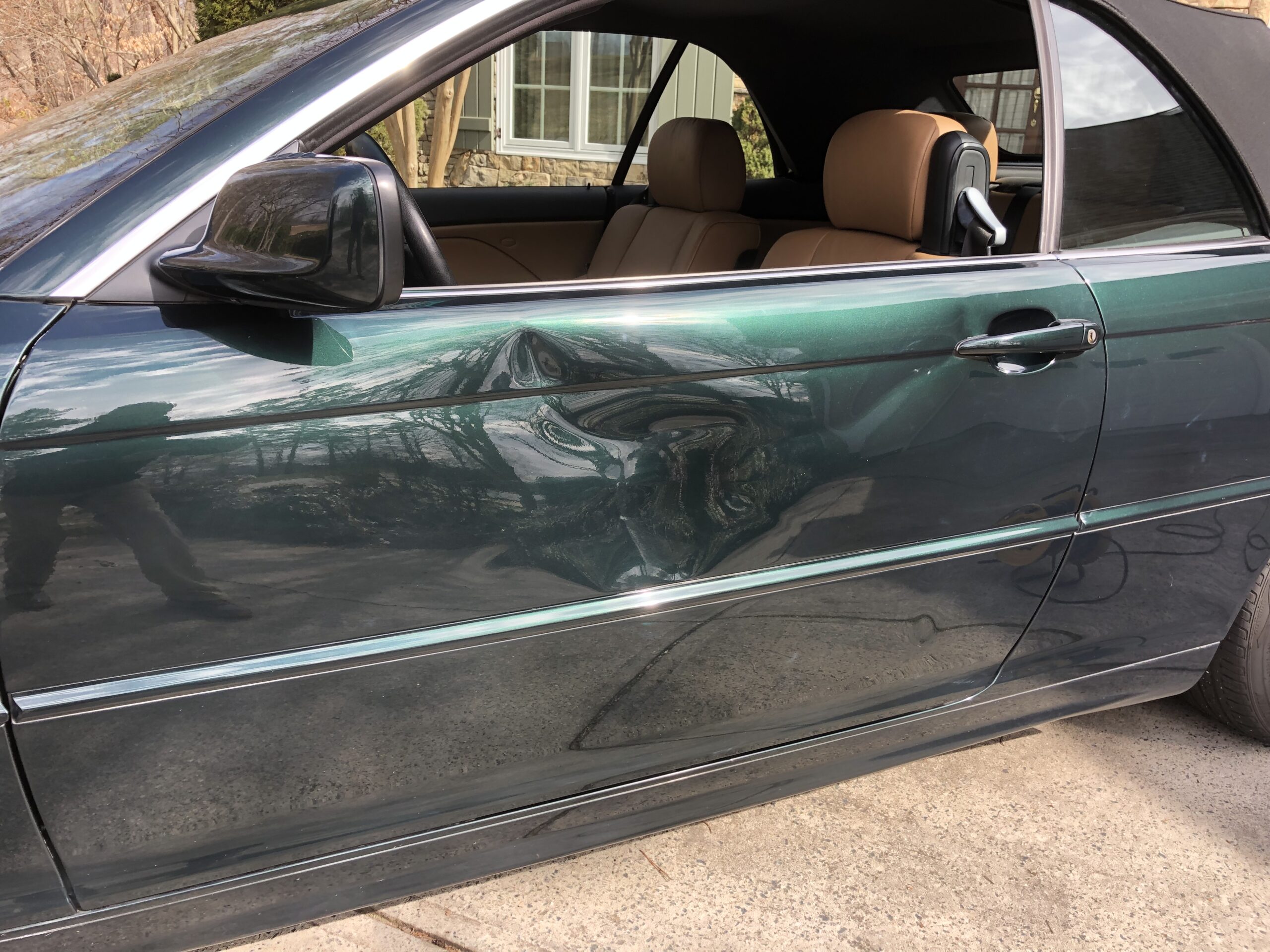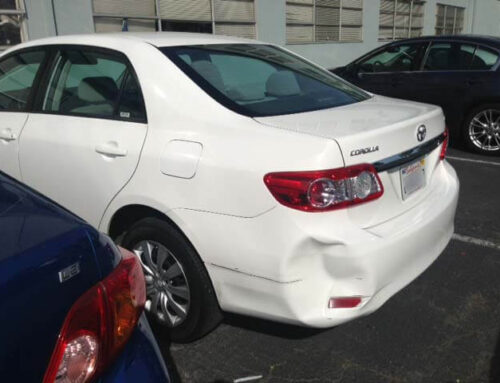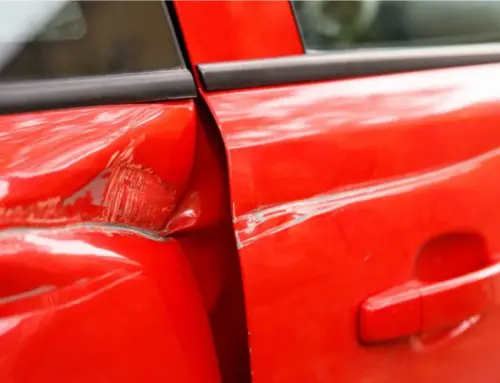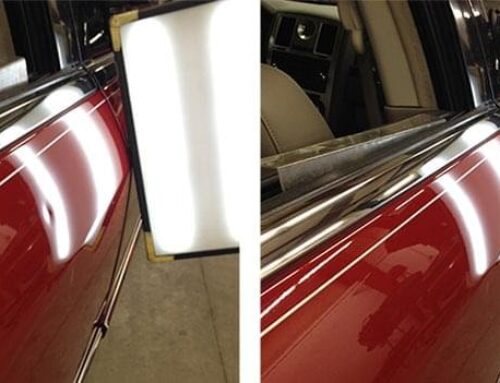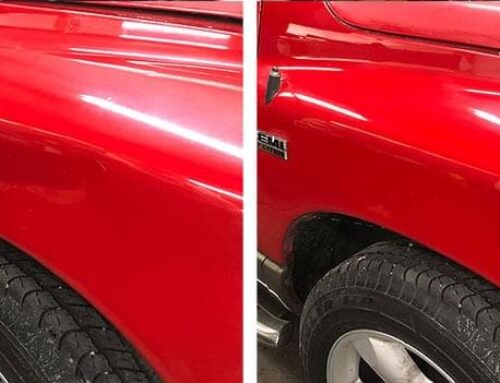Winter can be tough on your car, and once the snow and ice melt away, you might start noticing a few dents and dings that weren’t there before. It’s almost like your car has its own post-winter story to tell—one filled with bumps from road salt, hail, or even those unexpected scrapes from parking lot mishaps.
As the weather warms up and you take your car out for more drives, spring is the perfect time to address those minor repairs. The good news? Getting those dents fixed is easier and more affordable than ever. Spring is quietly becoming the go-to season for freshening up your car’s appearance and giving it a little TLC after the harsh winter months.
How does winter weather contribute to hidden vehicle dents?
Winter weather contributes to hidden vehicle dents in several ways, often creating damage that isn’t immediately visible until the weather warms up. Here’s how:
- Freezing Temperatures: As temperatures drop, metal and plastic become more brittle. When exposed to cold, your vehicle’s exterior is more prone to cracking or denting upon impact, such as when it comes in contact with rocks, debris, or other objects on the road.
- Snow and Ice Buildup: Snow, ice, and frozen debris can accumulate on your car, causing pressure on the body when they melt. This added weight and pressure can lead to dents or other hidden damage, particularly along the car’s roof, hood, or sides.
- Road Salt and Chemicals: Salt used to melt snow and ice can cause damage to a vehicle’s paint, making it more susceptible to chips and scratches. These chips can then lead to rusting and the eventual appearance of dents after the layers of winter grime are removed.
- Hailstorms: Winter storms sometimes bring hail, leaving dents in a car’s body. These dents may not be obvious until the ice and snow thaw and the vehicle is washed.
- Changes in Air Pressure: Cold air causes the air inside tires to contract, leading to fluctuating pressure. If tires experience uneven wear, this can cause minor dents, which can lead to potential contact with potholes or curbs while driving.
Winter weather creates an environment where vehicle dents are often hidden beneath the grime and snow, only becoming apparent as the temperatures rise and the car is cleaned.
Why do more dent repairs happen during spring months?
Spring sees a significant increase in dent repairs for several reasons, as the warmer weather and changing conditions prompt car owners to address winter-related damage. Here’s why dent repairs are more common during the spring months:
- Thawing of Winter Damage: During winter, dents and dings often remain hidden beneath snow, ice, and grime. As the weather warms up, car owners begin cleaning their vehicles and uncover the hidden damage, prompting a rise in repair requests.
- Better Weather Conditions: Spring brings milder temperatures, making it the ideal time for car repairs. The warm weather ensures that paint and bodywork repairs can be done more effectively, with fewer risks of weather-related complications, such as freezing paint or materials.
- Road Debris from Winter: The harsh winter conditions often lead to an accumulation of road debris, such as gravel, ice, and salt, which can damage vehicles. As the snow melts, these issues become more apparent, and many drivers opt for repairs to restore their vehicles to optimal condition.
- Prepping for Road Trips: Many people plan summer vacations and road trips as spring rolls in. Before hitting the road, car owners often take the opportunity to have dents and dings repaired to ensure their vehicles look great and are in good condition for travel.
- Insurance Claims: With the thawing of winter’s effects, some car owners file insurance claims for dent repairs, knowing that their insurance policies may cover the cost. Spring becomes a popular time for drivers to take advantage of their coverage before the season changes.
Discovering hidden winter damage, improved weather, and the desire to prepare for summer driving leads to more dent repairs during spring.
What makes post-winter dents harder to detect on cars?
Post-winter dents are harder to detect on cars for several reasons, often due to the combination of environmental factors and the nature of the damage. Here’s why:
- Snow and Ice Coverage: During winter, snow and ice can cover your car’s exterior, hiding dents and dings beneath layers of frozen debris. The accumulated snow and ice often obscure the damage, making it invisible until the temperatures rise and the snow melts.
- Grime and Road Salt: Throughout the winter, road salt and grime build up on a vehicle’s surface. This buildup can conceal minor dents, making them difficult to notice, especially when the car is covered with salt or dirt. Hidden dents are revealed only when the car is thoroughly washed in the spring.
- Cold Temperatures: Cold weather makes car surfaces more brittle, meaning impact damage may be subtle and difficult to spot. Dents might not be as apparent during colder months because the metal is contracted, and minor dings might not appear as easily until the car warms up in the spring.
- Limited Inspection During Winter: Due to cold temperatures and snow conditions, drivers are less likely to perform detailed inspections of their vehicles in the winter. As a result, dents caused by road debris, hail, or minor collisions may go unnoticed until the car is inspected in better weather.
- Surface Tension: Cold weather causes materials to contract, which can make dents less noticeable. Once the weather warms up, the metal expands, and the dents may become more pronounced, but by this time, the damage may have been unnoticed during winter months.
These factors make post-winter dents harder to detect, leading to a delayed realization of damage that only becomes visible once spring weather arrives and the car is cleaned and warmed up.
When is the best time to schedule seasonal dent inspections?
The best time to schedule seasonal dent inspections is typically during the transition from one season to another, especially after the harsh winter months. Here’s why:
- Spring Thaw: After the winter months, snow, ice, and road salt melt away, revealing hidden dents and dings that were previously covered. Spring is the perfect time to schedule a dent inspection, as it allows you to catch any winter damage that may have been obscured.
- Post-Winter Clean-Up: Once the car is cleaned and the grime from winter is washed off, it’s easier to spot any damage. A seasonal dent inspection following a thorough wash can help identify minor dents before they become more noticeable or cause further damage.
- Before Road Trips: Scheduling a dent inspection in spring is ideal before embarking on summer road trips. Getting the car checked ensures it’s in top condition and free of any issues that might arise while traveling, such as dents caused by road debris.
- Early Fall: In preparation for the colder months, an early fall inspection helps identify any damage that may have occurred over the summer. This gives you time to repair the dents before the harsh winter conditions potentially make them worse.
- Consistency: Regular seasonal inspections, particularly in spring and fall, can help catch issues early, ensuring that your vehicle remains in good condition year-round.
By scheduling seasonal dent inspections in the spring or fall, you can ensure your vehicle is free of hidden damage and ready for the weather changes.
Ready to Say Goodbye to Winter Dents? Let Us Help!
Spring is the perfect time to give your car the fresh start it deserves. Those little dents and dings might seem like minor annoyances, but getting them repaired now will leave your car looking as good as new—just in time for sunny days and smooth rides. Don’t let the aftermath of winter linger any longer than it has to.
At Piedmont Dent Repair, we specialize in making those post-winter dents disappear with precision and care. Whether it’s a small ding or a more noticeable dent, our team is here to help restore your car’s appearance quickly and affordably. We’ve got the tools and expertise to get your ride looking its best, so you can hit the road with confidence. Let us take care of those repairs for you—because your car deserves it.

